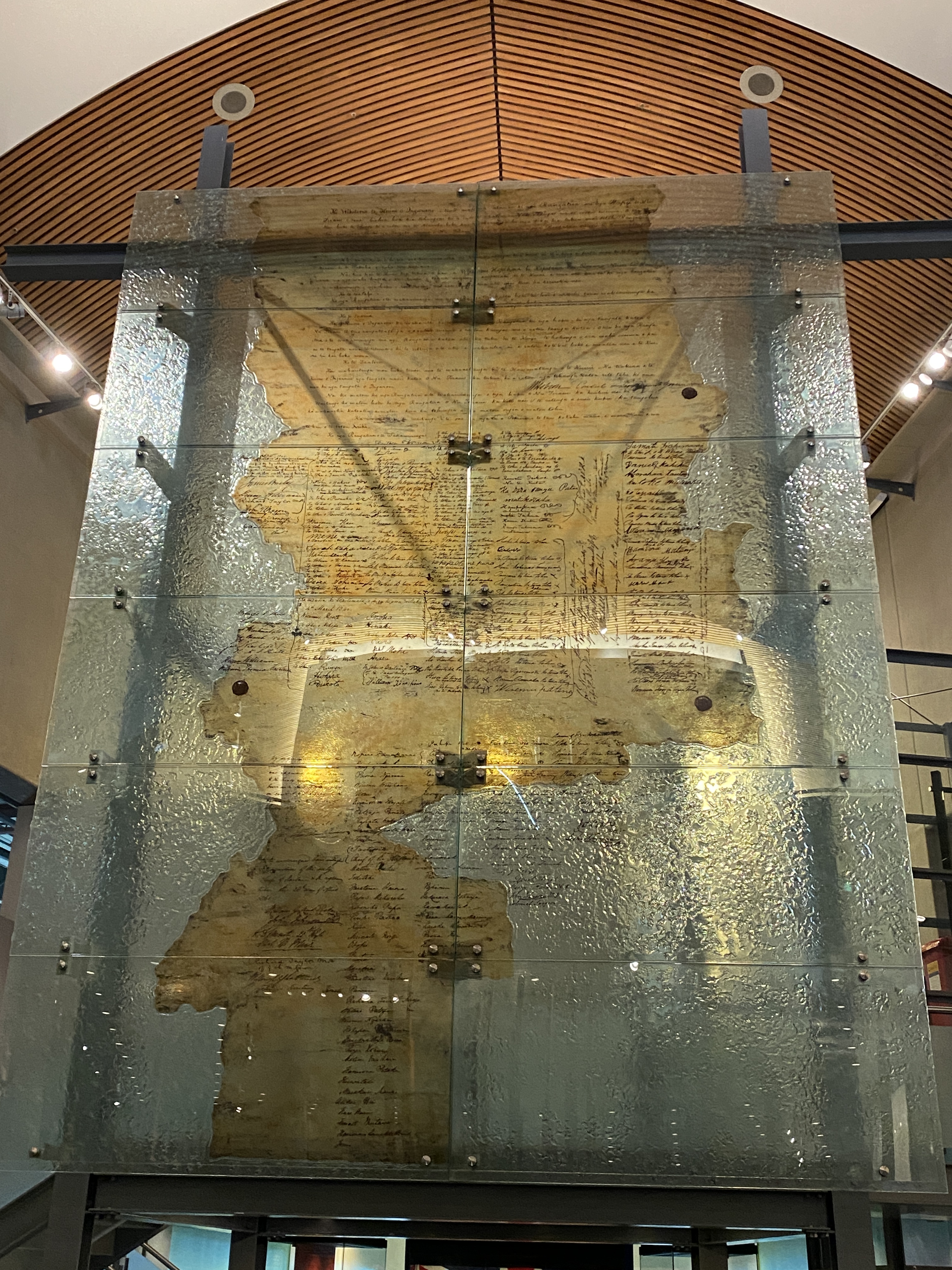
Watching some of the livestream of the hui-aa-motu at Tūrangawaewae marae on 20 January, I was particularly struck by Dayle Takitimu’s reference to te Tiriti illiteracy in her kōrero. By this, she meant people who would not read te Tiriti and did not understand it but had plenty to say about it nonetheless. She later called for greater education on te Tiriti for all New Zealanders. My aim for this blog is an educative: to help people find a way into this important document.
Moving on now to Article Three – we’re nearly at the end! As before, here is the actual article text, which I recommend reading (aloud, if possible).
Here is the text of Article Three in te reo Māori:
Hei wakaritenga mai hoki tenei o te wakaaetanga ki te Kawanatanga o te Kuini – Ka tiakina e te Kuini o Ingarani nga tangata maori katoa o Nu Tirani ka tukua ki a ratou nga tikanga katoa rite tahi ki ana mea ki nga tangata o Ingarani.
Here is a translation of that text into English (by Professor Sir Hugh Kawharu):
For this agreed arrangement therefore concerning the Government of the Queen, the Queen of England will protect all the ordinary people of New Zealand and will give them the same rights and duties of citizenship as the people of England.
Here is Article Three in the English version:
In consideration thereof Her Majesty the Queen of England extends to the Natives of New Zealand Her royal protection and imparts to them all the Rights and Privileges of British Subjects.
One again the Queen of England is the subject of this sentence, the person described as doing something. Or, rather, two things. The first is that she pledges to protect “nga tangata maori katoa” or “the ordinary people of New Zealand” (who at that time were Māori as we understand the term today – the Treaty “helpfully” refers to “the Natives of New Zealand” to make this clear). The second is that she gives or “imparts” to them “nga tikanga katoa rite tahi kia ana mea ki ngā tangata o Ingarani” or “the rights and privileges of British Subjects”. It does not, noticeably, actually make them British subjects – implicitly reinforcing the recognition of their tino rangatiratanga and self-government set out in Article Two.
In terms of protection, Sir Hugh notes:
‘Maori’ at Waitangi in 1840 refer to Hobson being or becoming a ‘father’ for the Maori people. Certainly this attitude has been held towards the person of the Crown down to the present day – hence the continued expectations and commitments entailed in the Treaty.
The word “tikanga” was used in te Tiriti to convey the English term “rights and duties”. Sir Hugh says that “no Māori could have had any understanding whatever of British tikanga” and would have likely interpreted it as a further reference to protecting the pre-existing tikanga and authority of the Rangatira as that in Article Two.
It’s worth noting too that, in 1840, the rights and privileges of British subjects did not amount to much for most people. In the UK at that time, most men and all women could not vote, women had few rights at all (particularly once they married and effectively no longer had a separate legal existence), there was no social welfare state or National Health Service, no-one got an old-age pension, and, if people got an education, only a few made it past primary level. They did, however, have the right to justice and a fair trial – ancient rights granted by Magna Carta (1215), however imperfectly observed in practice.
Over time, in both the UK and in New Zealand rights have been significantly extended, now including a universal right to vote for anyone aged over 18, the right to an education and the civil and political rights set out in the New Zealand Bill of Rights Act 1990 (NZBORA). Among several other rights, NZBORA affirms the right to freedom of expression, the right to freedom from discrimination, and it protects the rights of ethnic, religious and linguistic minorities.
Today, Article Three of te Tiriti | the Treaty is seen as the basis for citizenship rights and equity for both Māori and tauiwi (non-Māori). As citizens and residents, we are all equal before the law – again, not always observed in practice – and have rights and responsibilities that flow from that, such as the right to vote and the responsibility to pay tax. While we have the right to freedom of expression, we also have the responsibility, as Dayle Takitimu noted on 20 January, to educate ourselves as to what our founding document actually says.
Before we look at the final written part of te Tiriti | the Treaty, we will consider a fourth “unwritten” article concerning religion and customary beliefs that was verbally agreed at Waitangi in 1840. We’ll also take a look at why the oral debate before the signing was so important – and why it is considered an integral part of understanding the agreement.
